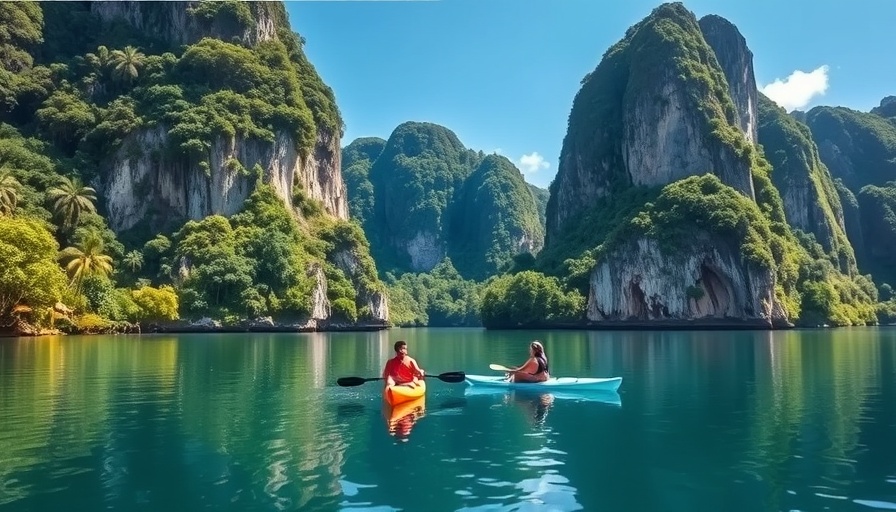
Discovering Sustainable Gems in the Philippines
The Philippines is not just known for its white sandy beaches and vibrant culture; it is emerging as a leader in sustainable ecotourism. Small islands like Coron and Bantayan represent the shift towards eco-friendly practices, offering travelers a chance to explore stunning landscapes while promoting environmental conservation. This transformation is rooted in a community-driven approach where locals, once reliant on damaging fishing practices, have transitioned to managing sustainable tourism projects.
Community-Driven Initiatives
In Coron, Jose “Jojo” Mazo has been pivotal in this transformation. As a ranger at the Siete Pecados Marine Park, he witnessed firsthand the detrimental effects of overfishing and illegal activities. Today, this marine park boasts a controlled visitor strategy that limits daily entries to protect the ecosystem. With a large percentage of Coron’s workforce tied to tourism, locals benefit significantly from responsible travel efforts. This approach empowers communities while protecting their natural resources.
Enhancing Accessibility for Sustainable Growth
Recent developments like improved flight connectivity have made these islands more accessible to tourists. For instance, direct flights to Coron have cut travel time from major cities, increasing visitor numbers and, consequently, revenue that can support local conservation efforts. Higher tourist footfall has translated into better funding for initiatives like mangrove restoration and marine biodiversity programs. Such changes exemplify how tourism, when managed responsibly, can foster both economic growth and environmental stewardship.
Promoting Ecological Sustainability Onward
Yet, despite the promising outlook, there are critical lessons to learn from other regions where mass tourism has led to environmental strain. The Philippines is cautious about maintaining balance; initiatives are underway to ensure that tourism does not become a burden. Local governments are implementing regulations that limit tourist activities known to harm marine ecosystems, proving that sustainable tourism is not just a trend but a necessity.
Moving Towards a Green Economy
As the islands become greener, they are also adapting practices found in the circular economy. This means utilizing resources efficiently, minimizing waste, and promoting a sustainable lifestyle. Practical steps such as reducing plastic usage and encouraging travelers to engage in eco-friendly behaviors are becoming standard practices. By supporting local businesses focused on sustainable products and practices, tourists can contribute significantly to reducing their carbon footprints and enhancing renewable resource use.
The Road Ahead: Responsible Tourism
Joining the eco-conscious movement means not only choosing destinations like Coron and Bantayan Island but engaging with them responsibly. Tourists are encouraged to embrace sustainable practices such as supporting local guides, participating in beach clean-ups, and choosing eco-friendly accommodations. By thoughtfully engaging with these beautiful environments, travelers can leave a positive impact, ensuring that the precious ecosystems remain vibrant for future generations.
With growing awareness around environmental issues and the climate crisis, sustainable tourism is not just beneficial; it’s essential. The Philippines stands as a testament to how with strategic planning, community involvement, and responsible tourism, we can all contribute to building a sustainable future.
 Add Row
Add Row  Add
Add 



Write A Comment